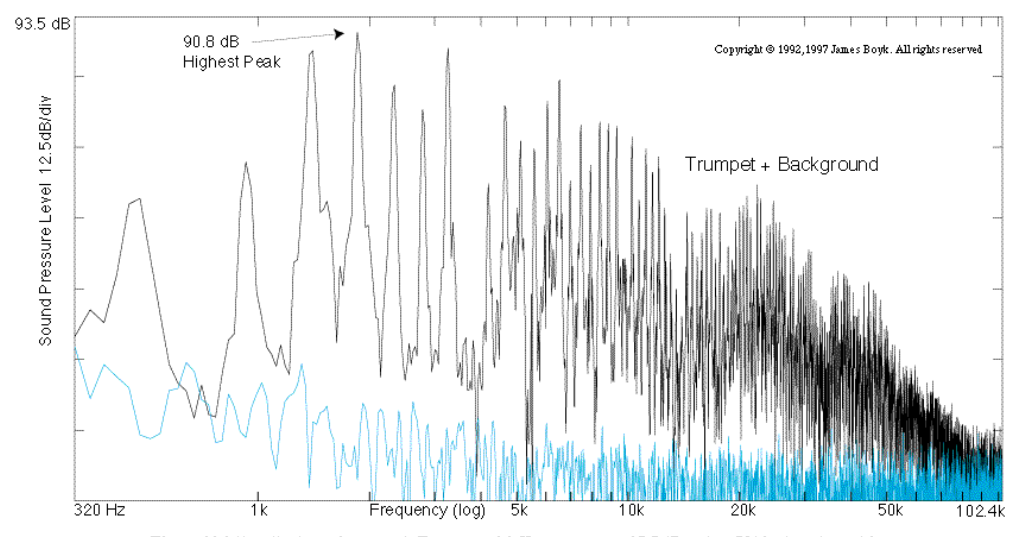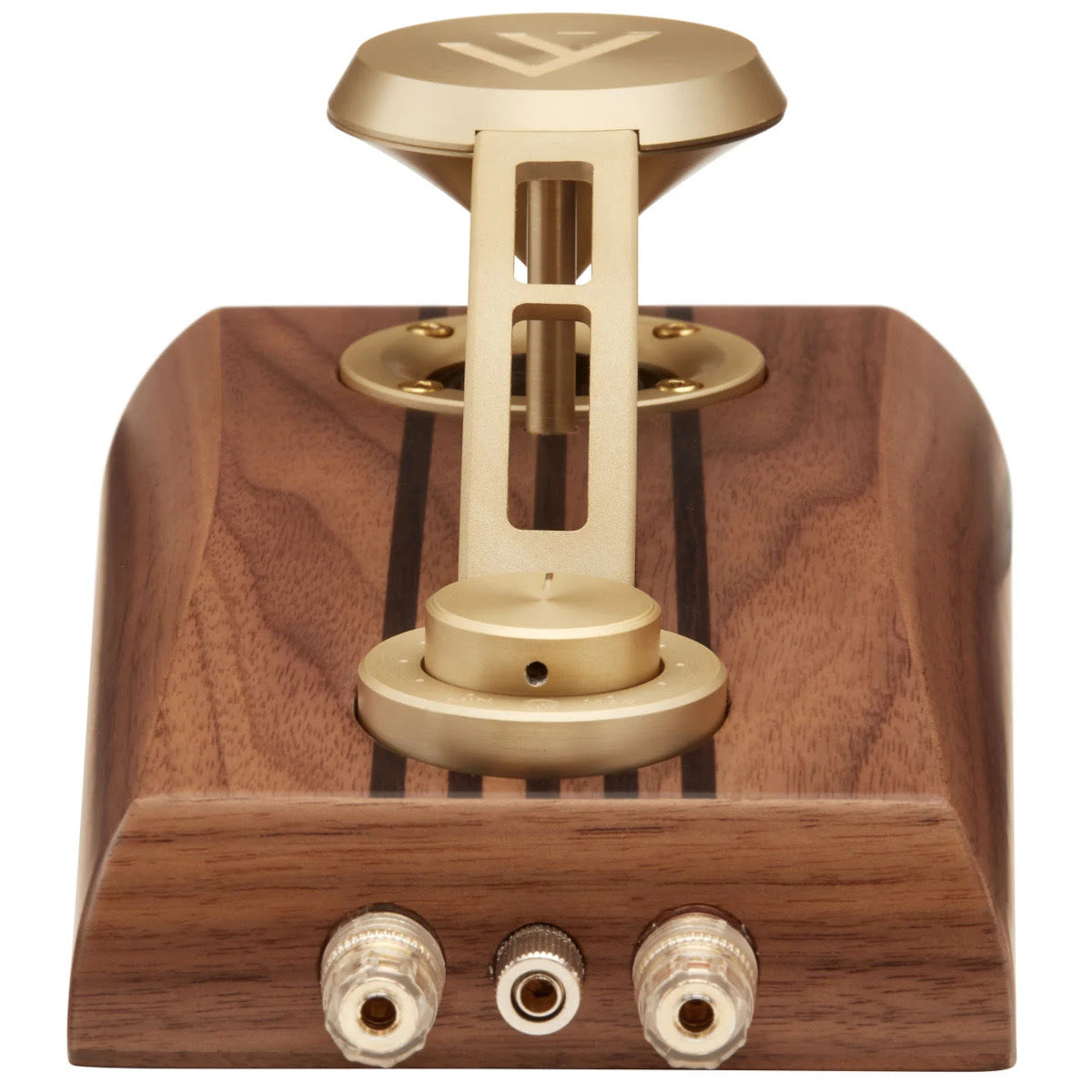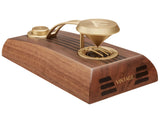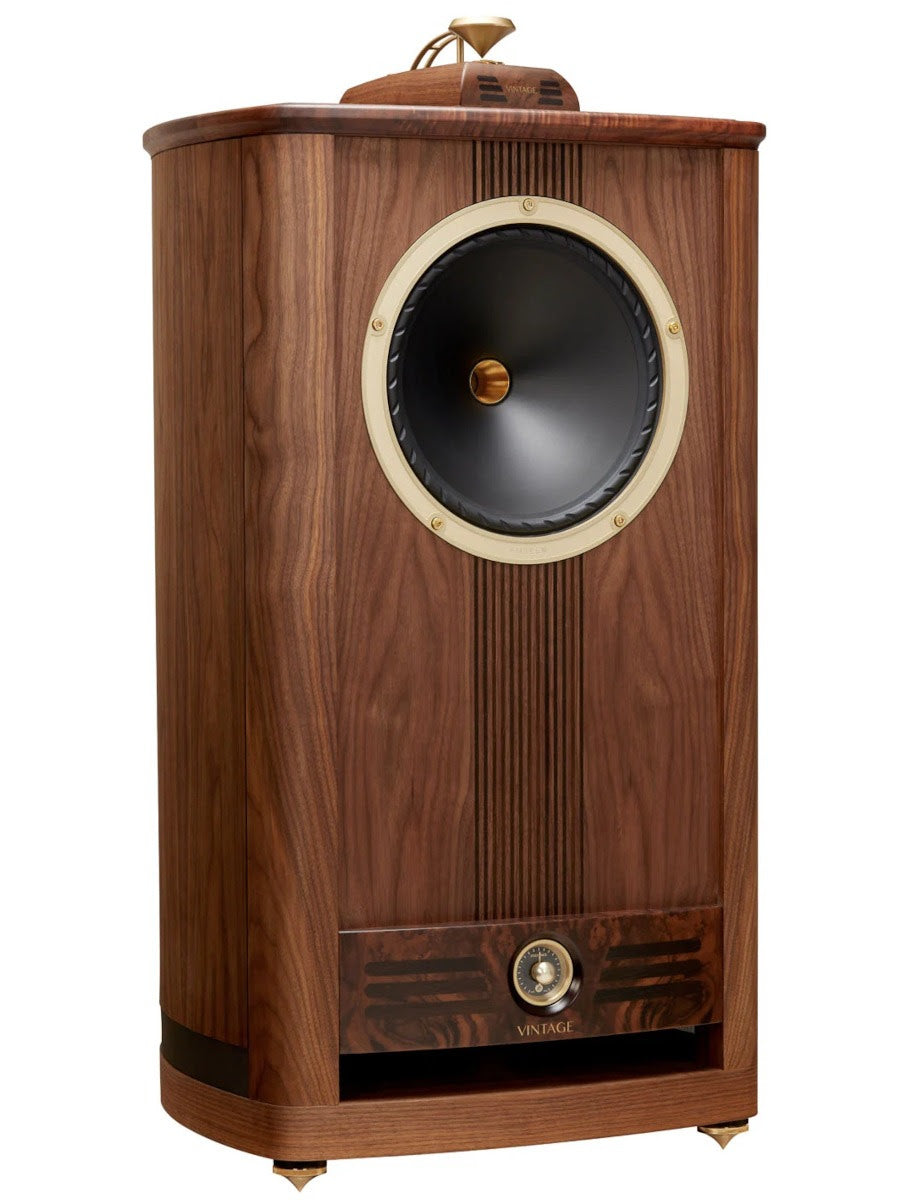It's a Bird. It's a Plane.
It's SuperTrax.

Fyne Audio's new supertweeter will have you singing high praises.
By now, most of us appreciate what a well-integrated subwoofer does in a hi-fi system. We understand how it takes over from the loudspeaker's fading low-end response to seamlessly extend performance deep into sub-bass territory.
Did you know the same concept can be applied to the other end of the frequency range, by adding a supertweeter and extending linearity well past 20,000 Hz?
But you have questions... Of course you do. We all know we can hear, or at least feel, sub-bass notes, and as a result, few of us have quibbles with the "how" of subwoofers. With high frequencies though, it's common knowledge that only the youngest and healthiest of us can hear past 16,000 Hz, topping off at the human maximum of 20,000. So how can supertweeters work?
"Only Dogs Can Hear My Speaker's Extension!"
The common forum comment when anyone discusses any kind of frequency extension past 20 kHz, is that only dogs and cats can hear it. As usual with forum comments, this completely misses the point.
The overall linearity of a system past audible frequencies means greater linearity and fewer passed down artifacts in the audible range. The response graph of a speaker that drops by 6 dB at 20 kHz is likely to be more problematic in the audible frequencies than the graph of a speaker that drops by 6 dB way up at 55 kHz.
This point about a system's linearity doesn't fully explain the value of a supertweeter. If you have a loudspeaker that starts breaking up at 10 kHz, ruining the air frequencies, it is not going to be fixed by throwing on an ultra-high-frequency transducer. After all, there is no crossover so you aren't lightening the load on the speaker by adding a supertweeter.
The point here is that, like high-end subwoofers, a supertweeter is not intended to be a repair for bad loudspeakers, but more a fine-grit finish for good speakers. By masking and filling in over the natural decay and understandable non-linearities of a well-designed loudspeaker, both subwoofers and supertweeters bring improvements across the entire frequency range.

This graph shows just how much energy a trumpet has all the way to 100 kHz. Quoted by Dr. Paul Mills in his white paper on the SuperTrax, it is from a paper There's Life Above 20 Kilohertz! A Survey of Musical Instrument Spectra to 102.4 KHz by James Boyk, California Institute of Technology.
Non-Audible Doesn't Mean Non-Perceptible
Not only are we learning new things about how our bodies work, we are still finding structures and anatomies never before identified. While it's true we can't hear past 20 kHz, there are other ways to sense the air pressure changes we call sound.
Dr. Paul Mills, the genius behind Fyne Audio's designs, has peer-reviewed scientific findings to back his foray into the upper reaches of the audio band.
Japanese researcher Oohashi used brainwave activity to prove that frequencies up to 60 kHz are perceptible. A further paper by Lenhardt found that profoundly deaf subjects could sense ultrasonic frequencies. The mechanism for this is most likely bone conduction which is sensed by a small organ in the inner ear called the saccule.
It makes sense then much of our world is filled with sounds that extend far past what we consider the top end of our hearing. Musical instruments, for example, have plenty of energy in the ultrasonic regions. The Fyne Audio whitepaper on the SuperTrax cites a study that shows the spectral energy from a trumpet (see graph above). There is considerable energy above 20 kHz, and it's only at about 100 kHz that it drops into the noise floor.
"A similar result," writes Dr. Paul in the paper, "is found with instruments from other musical families, with the violin and oboe showing energy above 40 kHz. Even sibilants in speech were found to have energy above 40 kHz."
Percussion instruments were found to have even more high-frequency information, says Dr. Paul. "A cymbal crash has 40% of its energy above 20 kHz, "while the triangle was found to have a healthy output at 100 kHz."
But Is This Information Recorded?
We've established that instruments produce ultrasonics, and that we can perceive them, so the next question is, are these frequencies even present in recordings, which are frequently capped at 20 kHz? Also, CD-quality files cannot even store information above 22.05 kHz. (For any given sampling rate, the highest frequency that can be sampled is half the rate, so for CD, half of 44.1 kHz.)
"I suspect the ultimate performance will always be limited by the content," says Max Maud, sales & marketing director, Fyne Audio. "But of course, a lot of music won’t be that compressed or limited. Also, it's how these unattainable frequencies alter the stuff we can hear, allowing these frequencies more room to breathe."

Don't Miss the 360 Angle
Now, onto the specifics of the Fyne SuperTrax. As you can see from the photos, there's something different going on there, and it's groundbreaking enough that the design has been freshly patented.
The thin-ply carbon diaphragm driver of the SuperTrax fires upwards onto a tractrix profile cone that's modeled on the BassTrax used in Fyne loudspeakers. This allows for a 360 degree dispersion which makes the SuperTrax sound far more realistic than regular supertweeters, which have a very narrow dispersion.
Because the SuperTrax avoids "beaming" effect associated with higher frequencies "the spatial effect in the music is amazing," says Max. "Quite astonishing, in all honesty."
With its rich walnut finish and gleaming metalwork, you can see that the SuperTrax is a perfect match for Fyne's Vintage series of speakers. However, it will work with any flat-topped speaker up to 98 dB sensitivity.
Are you convinced it's not just Fido and Mittens who'll appreciate a supertweeter, but you are hesitating because the SuperTrax's finish doesn't match your modern loudspeakers? Worry not, Fyne Audio will have a contemporary design later this year. And since Fyne's bestsellers are the F700 range with the sloping top, says, Max, "Our clever designers will factor in this adjustment too."

Set Your Speaker Phase to 'Stun'

The Fyne Audio SuperTrax supertweeter is a perfect match for Fyne's Vintage loudspeaker series.
At each end of its frequency response, a loudspeaker is effectively a filter. For example, as the tweeter's high-frequency response rolls off, the driver now functions as a low-pass filter.
Filters cause phase errors, especially around the pass band. Let's make a simple physical filter: a 1" diameter metal ring that a series of marbles is dropped through at a given speed. All marbles under 1" will pass through, and all marbles over 1" won't, at least on paper.
But in practice, while smaller marbles, say 0.25" diameter and 0.5" diameter sail straight through your filter, as you get closer to 1", the marbles will start to be slowed down or otherwise affected by it. A marble that's 0.90" diameter might rattle through the filter ring, changing speed and direction. And what of the marble that's 0.95"? Or 0.99"?
As you can see, marbles of increasing sizes will be slowed down more and more as they approach the end of the filter's passband (here, 1"), until finally they are stopped.
When this unequal slowing happens to sound frequencies, you get phase errors in the music. Adding a supertweeter, increases the amount of "correct" high-frequency information reaching you, masking these errors caused by your loudspeakers.
And like everything connected with timing in audio, the results of fixing these errors are profound. Says Dr. Paul, "Even with restricted bandwidth sources the addition of the supertweeter reduces phase error and improves transient performance significantly below 20 kHz. This leads to increased tonal accuracy at all frequencies, as the harmonics of instruments are not distorted in time."
"This is how a supertweeter improves system performance," continues Dr. Paul, "not just with wideband material such as high-res digital files, vinyl, and tape, but with limited bandwidth material such as Red Book CD standard."
Want to Win a Pair of Focal Headphones?

Meet us at CanJam NYC and submerge yourself in the world of Bathys!
Upscale Audio will be at CanJam NYC to present some of the best personal audio brands in the world. Come visit us for a chance to win a pair of Focal Bathys, the wireless active-noise-canceling headphones that are so immersive, so otherworldly, they're named after a deep-sea submersible, the bathyscaphe.
CanJam NYC 2024 will be at the New York Marriott Marquis on March 9 and 10. We can’t wait to see you at our booth where you can audition amps by Pathos Acoustics, PrimaLuna, and Feliks Audio, and headphones by Focal, HiFiMAN, Meze Audio, ABYSS, and T+A Elektroakustik.
Show attendees who sign up at the booth for our newsletters will be entered into a draw to win the Focal Bathys, worth $700, and featuring an Al-Mg M-dome driver, 30-hour battery life, two active noise-cancellation modes, voice assist, and dedicated app. They are made in France, and have become a huge favorite among the Upscale Audio staff.
New Video: Kevin Says, "Don't Put Your Ear to the Tweeter!"
Kevin explains why worrying about the minuscule amount of noise through the speakers when there's no signal, completely derails your quest for good sound. Using the PrimaLuna EVO 100 Tube Phonostage as an example, he breaks down the wonder of tube phonostages, and why PrimaLuna is such an exemplar, far beyond its pricepoint.
